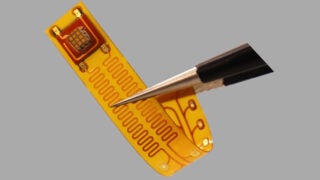USC surgeries broadcast live during global event
Inderbir Gill and Mihar Desai perform trend-setting procedures for a worldwide audience
Two surgeons from the USC Institute of Urology were among the principal featured participants in a worldwide 24-hour live robotic surgery event held at Keck Medical Center of USC and at 11 other leading robotic centers on every continent except Antarctica.
In all, more than 2,000 viewers from about 60 countries registered to participate in the Oct. 26 event, which included surgeries performed in countries that included Australia, Belgium, Brazil, Egypt, France, Great Britain, India, Italy, Sweden and South Korea.
At USC, the first surgery was performed by Inderbir Gill, whose pioneering robotic “zero-ischemia” partial nephrectomy was broadcast from the fourth floor of Keck Hospital. Gill is founding executive director of the USC Institute of Urology, as well as the chairman and professor in the Catherine and Joseph Aresty Department of Urology at the Keck School of Medicine of USC.
Skype and social media
Later that morning, Mihir Desai performed a robotic radical cystectomy with intracorporeal orthotopic neobladder. Desai is professor of urology and director of urological robotic surgery at the Keck School of Medicine.
For both of these procedures, the USC robotics team has the world’s preeminent experience. Both surgeons narrated the procedures for viewers who watched via an online link, and they answered questions transmitted to them via Skype and on social media.
Later that evening, a four-hour studio session was held in Aresty Auditorium to further discuss robotic surgeries. The studio session featured lectures by Gill, Desai and Andrew Hung, assistant professor of clinical urology, as well as Andre Abreu, a clinical fellow in urology. Professor of clinical urology Rene Sotelo presented his session via Skype while traveling to Miami.
The event’s organizers included Microsoft and the European Association of Urology. The first such live streaming event took place in February with 10 robotic centers from four continents.



